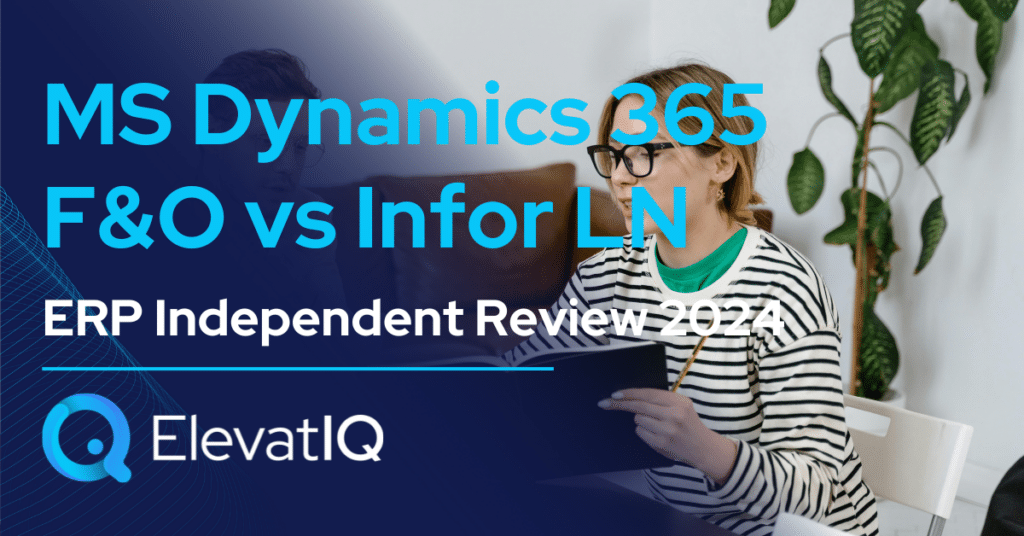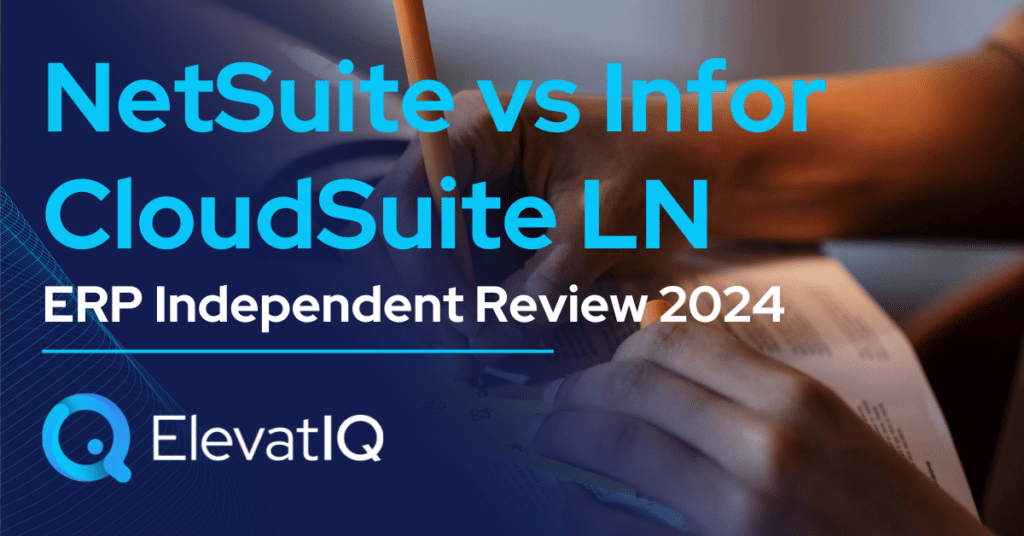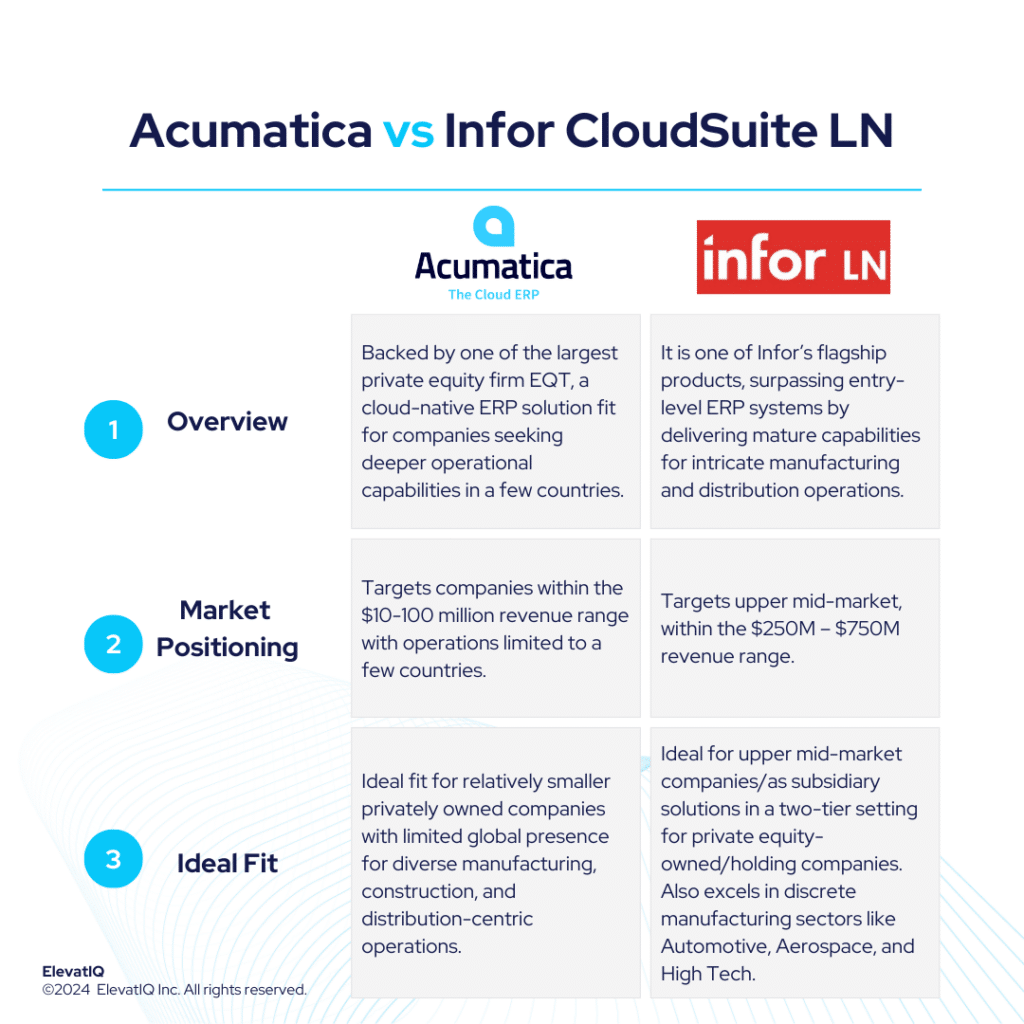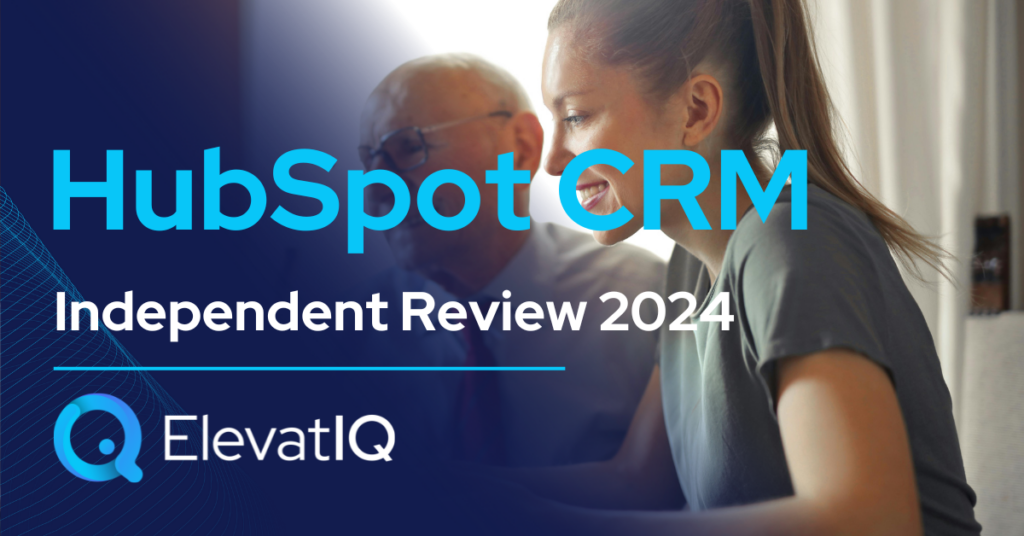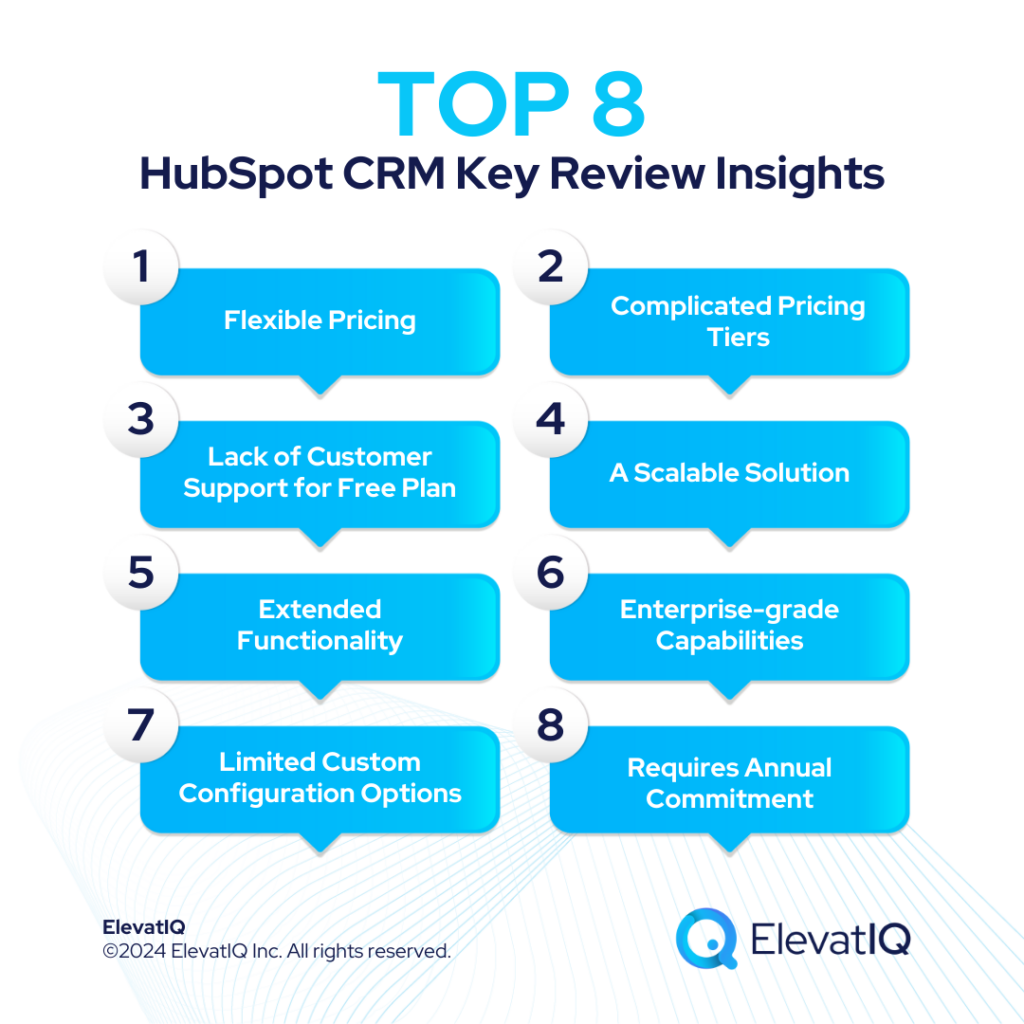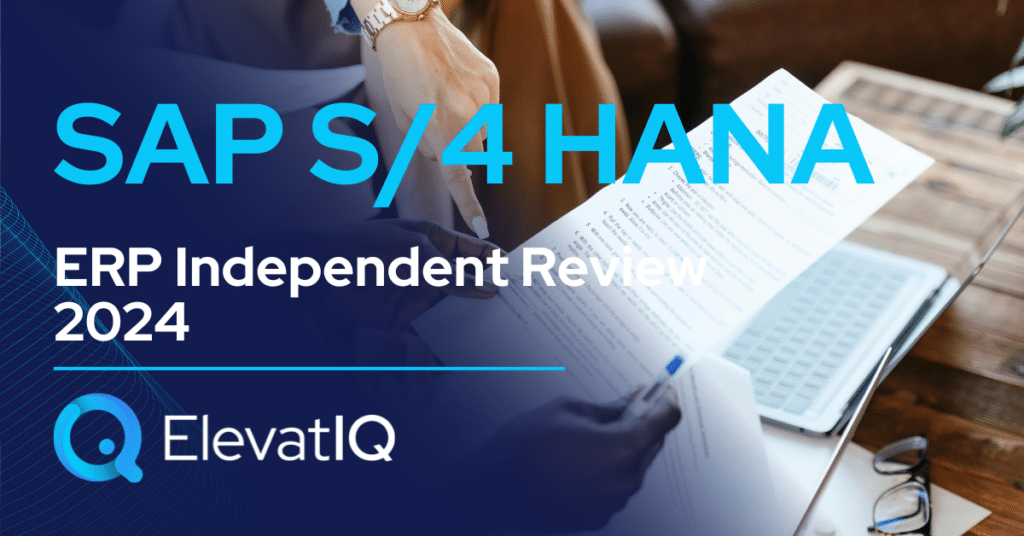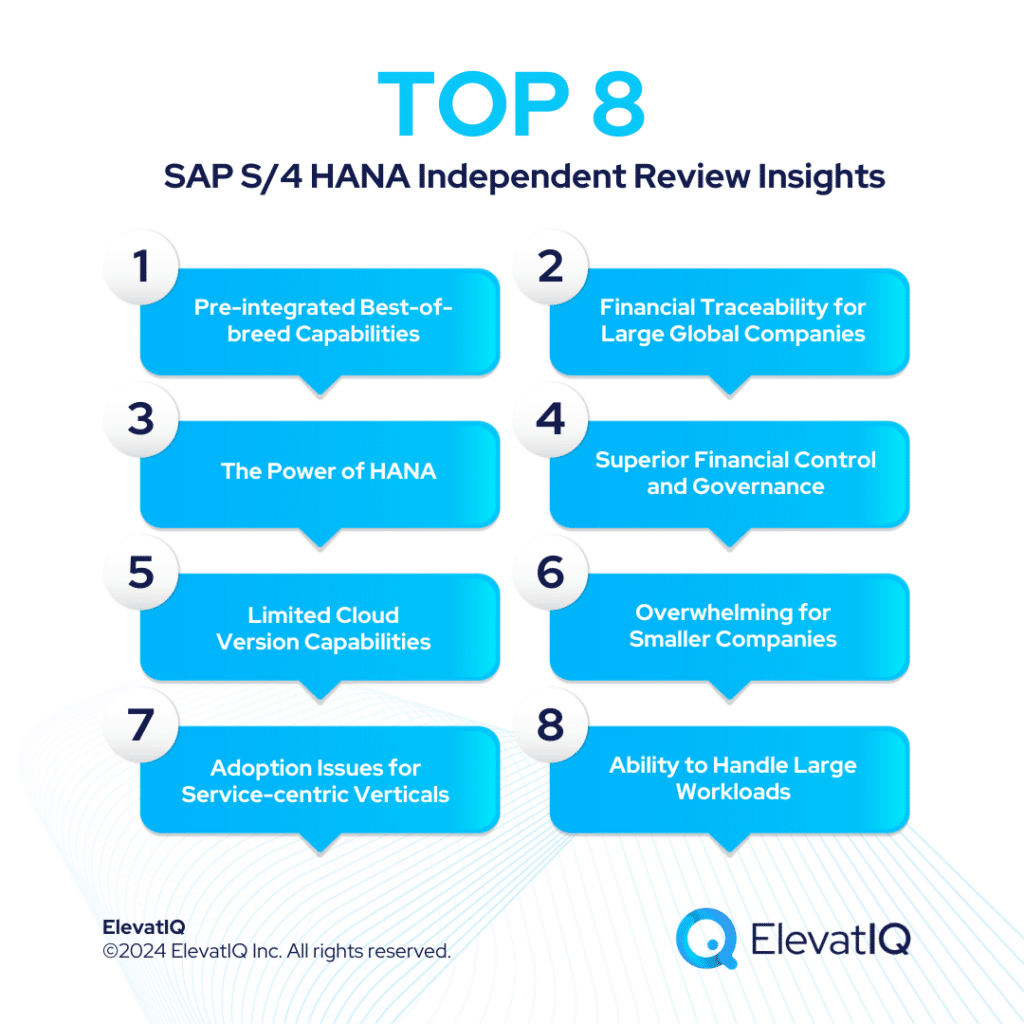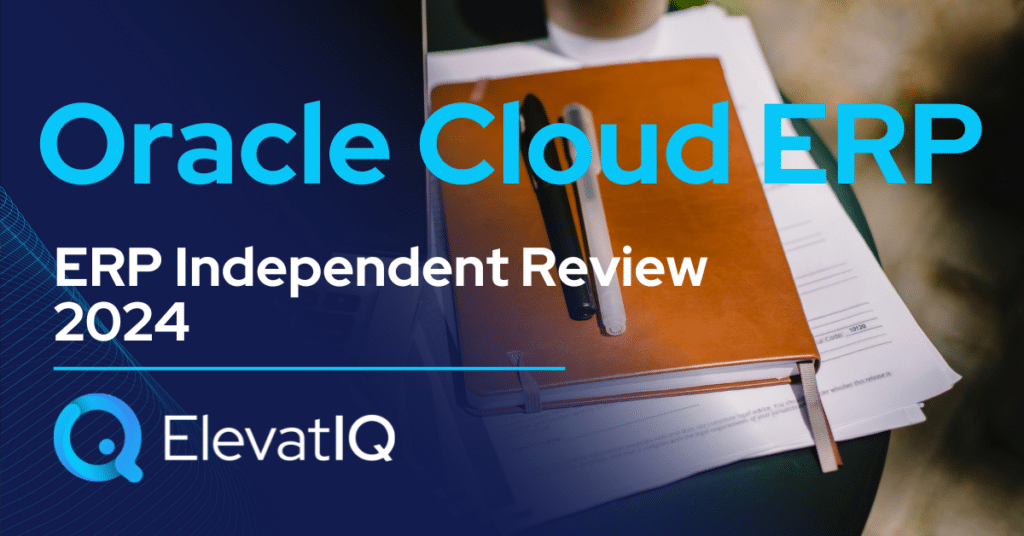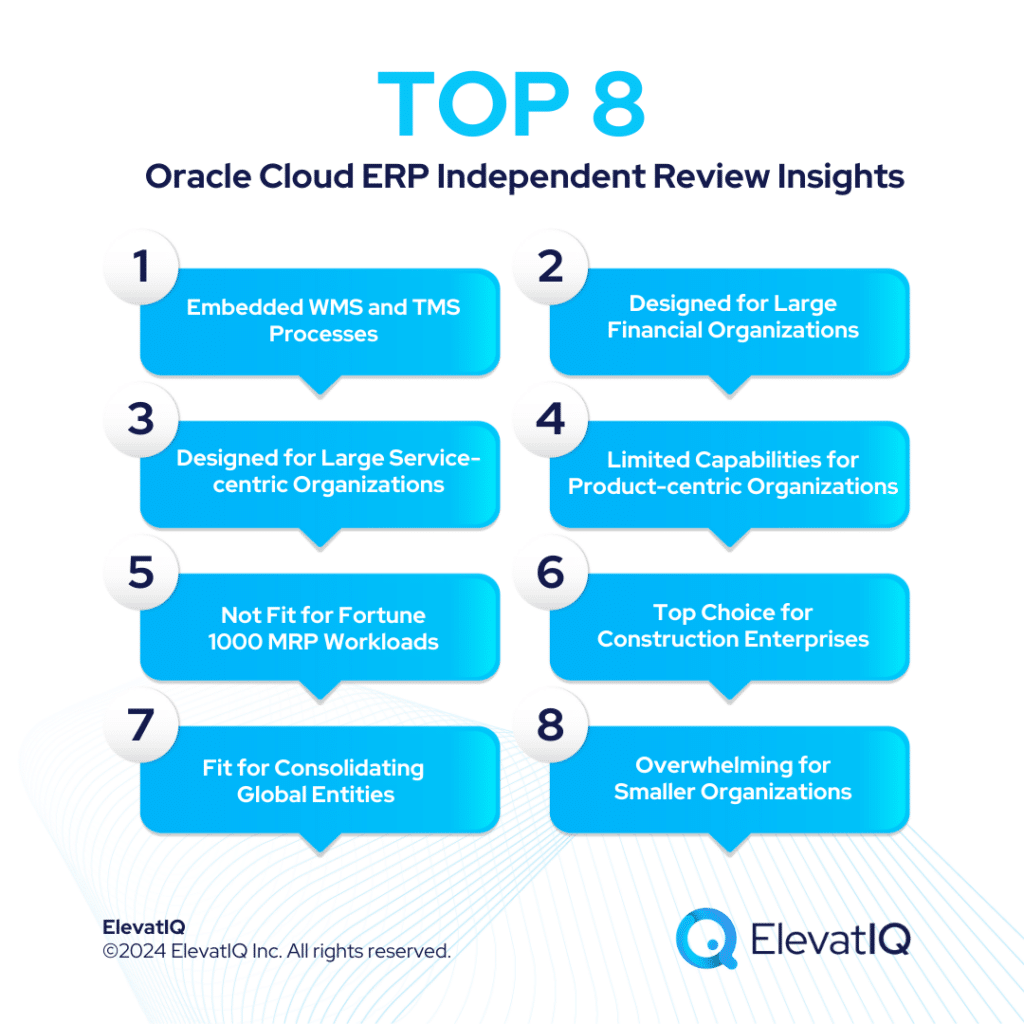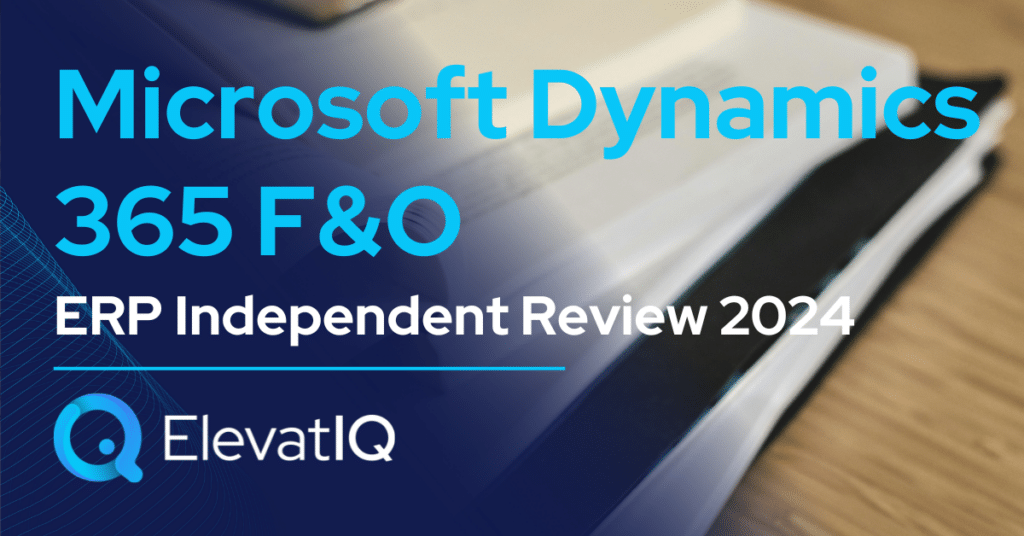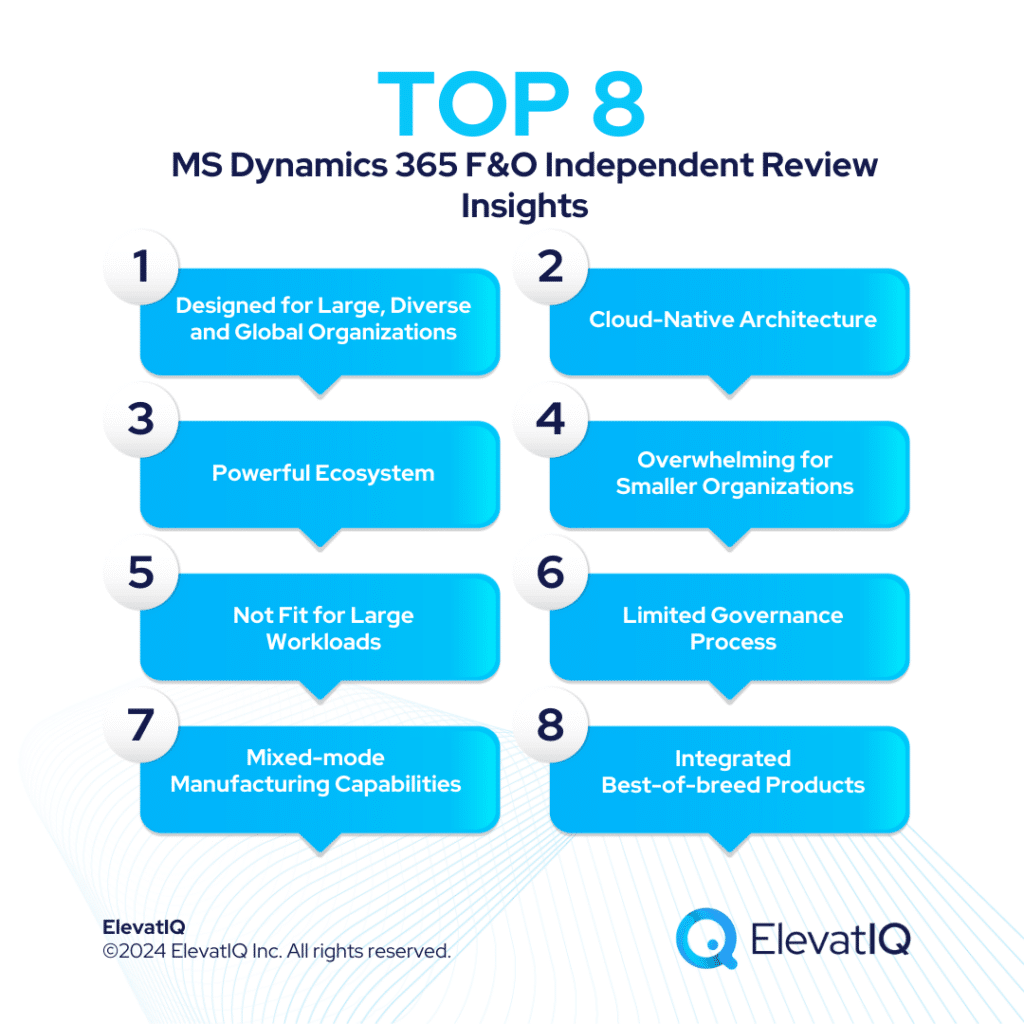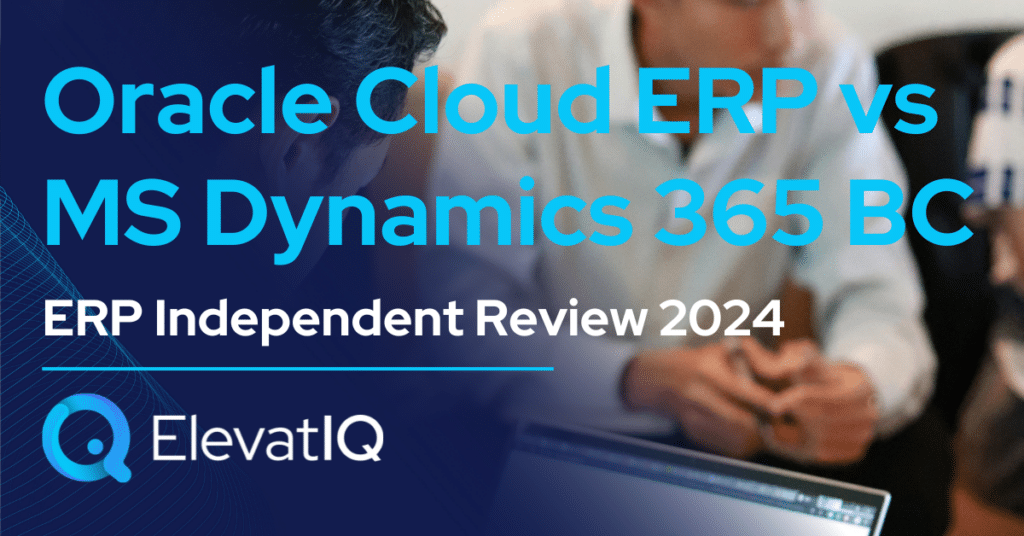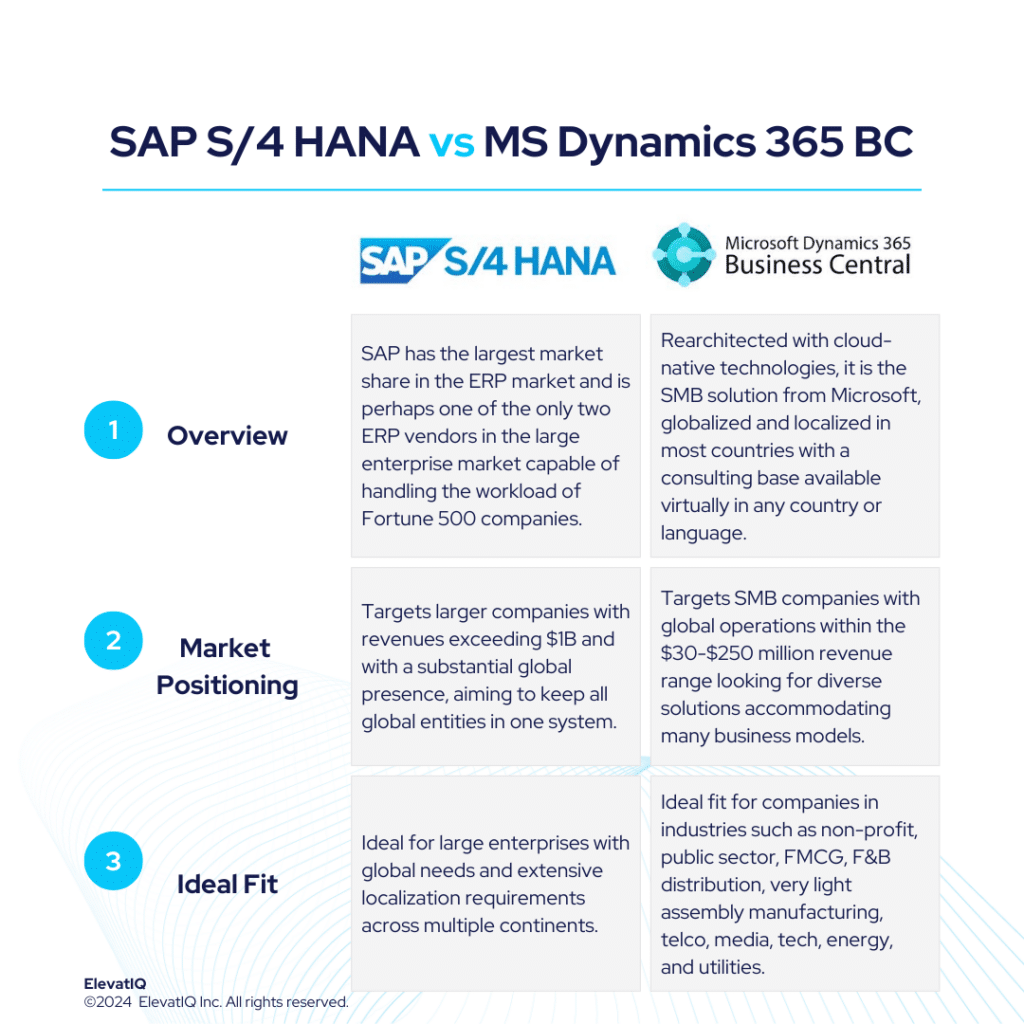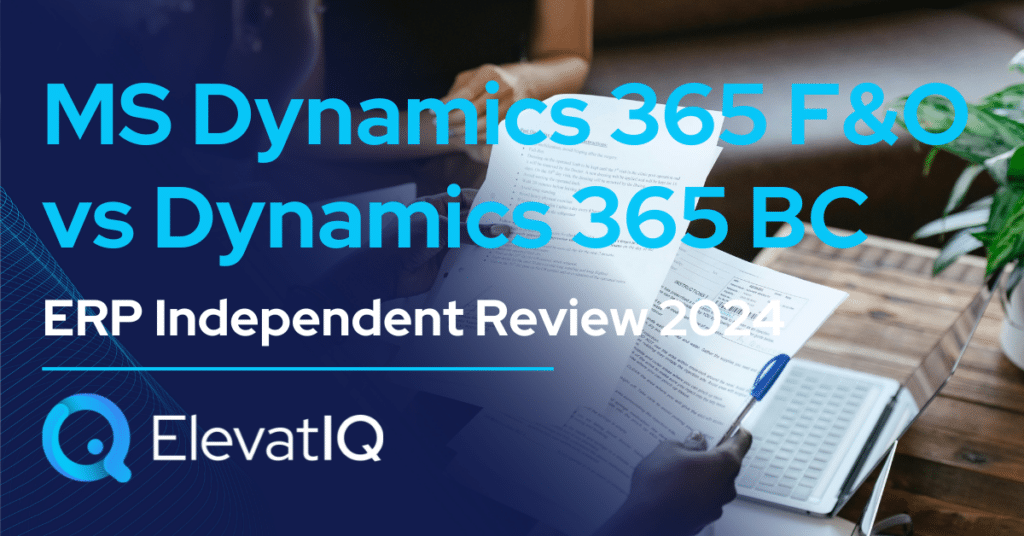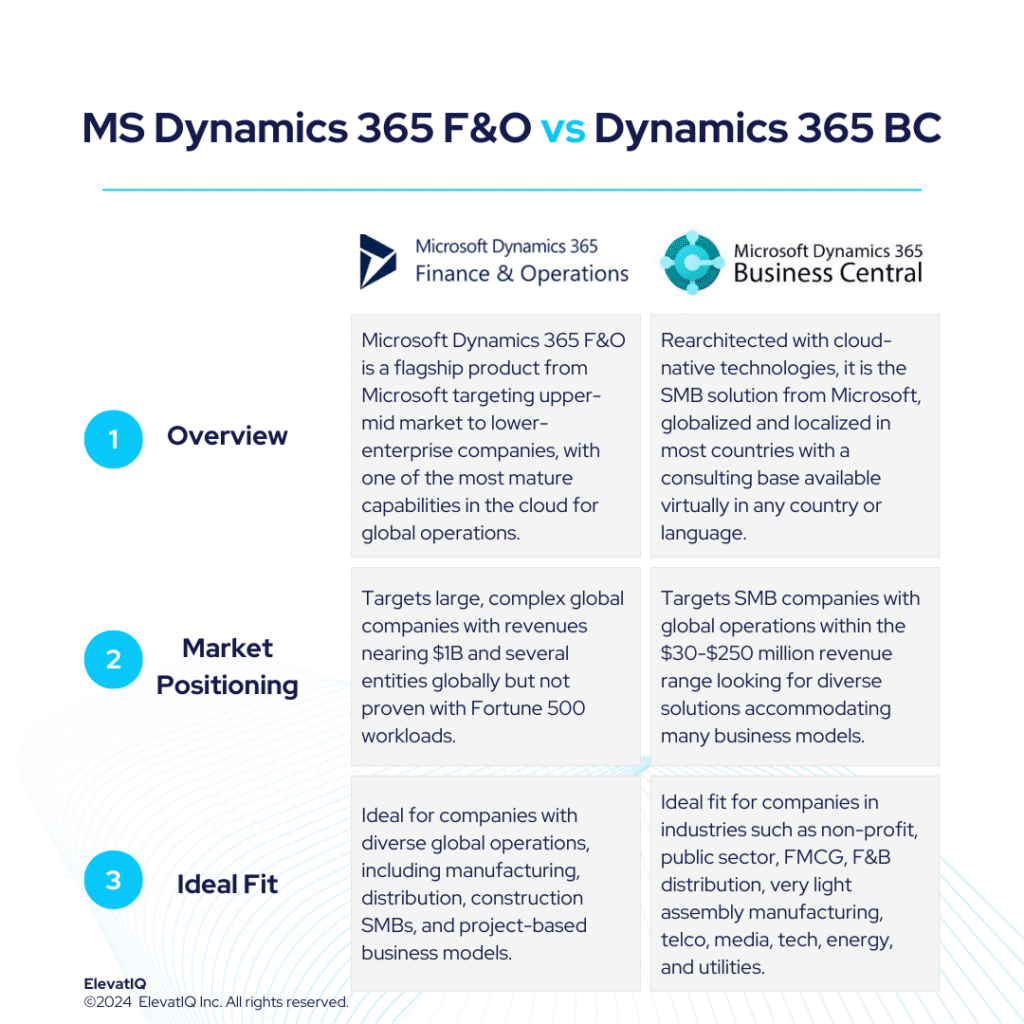MS Dynamics 365 F&O vs Infor LN ERP Independent Review 2024
Microsoft Dynamics 365 F&O stands out for its enhanced cloud-native functionality, leading in capabilities over competitors like SAP S/4 HANA and Oracle Cloud ERP. It caters to large, global companies with complex business models, offering mature technology and a successful track record across industries. In contrast, Infor CloudSuite LN surpasses entry-level ERP systems like Acumatica, Infor CSI, or NetSuite, by delivering mature capabilities for intricate manufacturing and distribution operations. It is also successful in the upper mid-market, targeting the $250M – $750M revenue range.
Dynamics 365 F&O is ideal for companies with diverse global entities, spanning industries like manufacturing, distribution, and construction. Whereas, Infor LN also provides a superior suite experience akin to SAP and Oracle, featuring enterprise-grade best-of-breed functionalities, including PLM, WMS, WFM, BI, and a supply chain collaboration platform. However, navigating the Dynamics 365 ecosystem may require assistance due to the presence of unqualified partners. Similarly, while Infor LN excels in discrete manufacturing and offers a robust suite experience, it does face certain challenges in specific scenarios such as with process-centric operations for companies.
Choosing between Dynamics 365 F&O vs Infor LN requires a detailed examination, and thus, this comparison offers valuable insights for ERP selection projects. Therefore, let’s explore further.
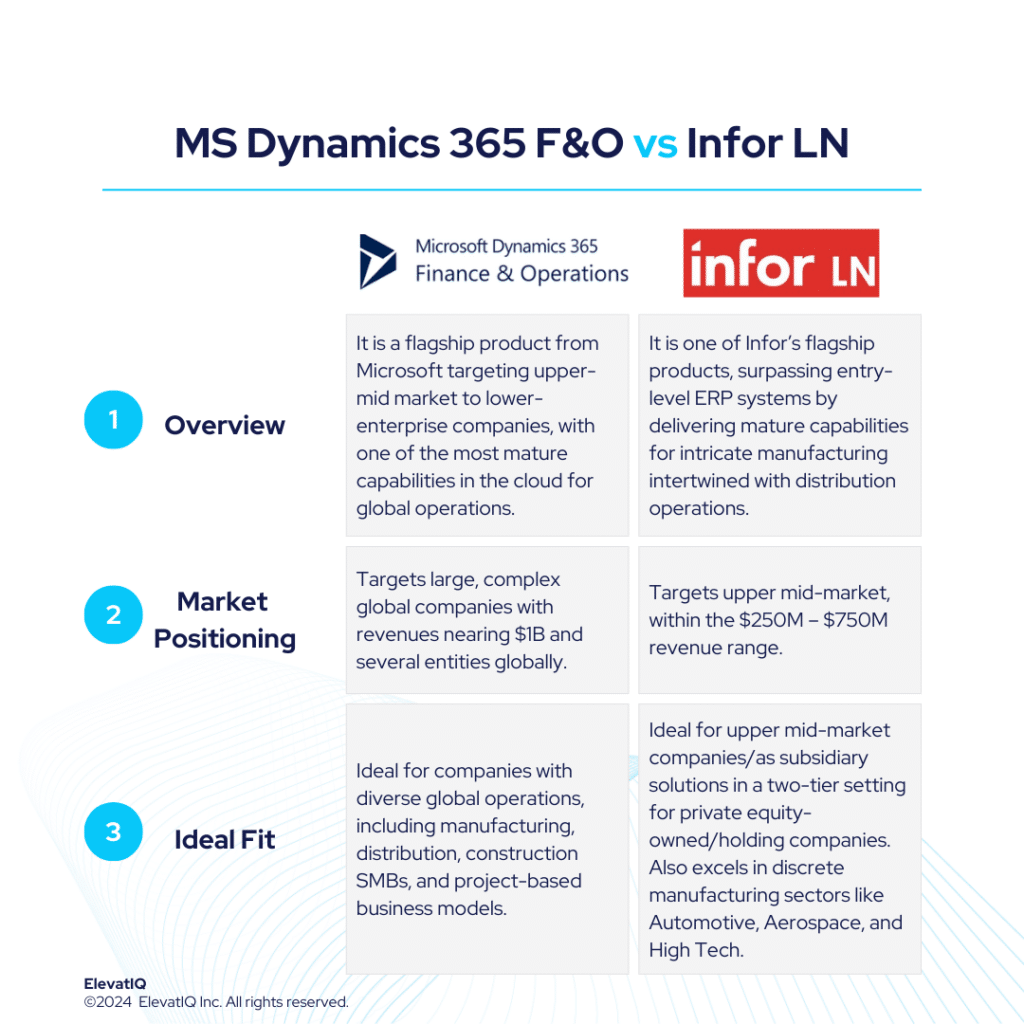

| MS Dynamics 365 F&O | Infor CloudSuite LN | |
| Started in | One of the most established enterprise software companies in the world | 2006 (when Infor acquired BaaN) |
| Ownership by | Microsoft | Koch Industries |
| No. of customers | 50,000+ | 1000+ |
What is Microsoft Dynamics 365 Finance & Operations (F&O)?
Microsoft Dynamics 365 F&O is often the third choice for larger global accounts, following SAP S/4 HANA and Oracle Cloud ERP. It offers a mature ecosystem with modern, cloud-native technologies, thus proving successful across various industries. It is perhaps the most diverse solution accommodating several global business models in one database, making it an ideal solution particularly for lower enterprise companies. While a great fit as a corporate ledger for large enterprises, it’s not as proven as other leading solutions in the enterprise market with workloads as high as millions of journal entries per hour that Fortune 1000 companies might demand.
Microsoft Dynamics 365 F&O also excels in localizations where other solutions may falter. A vibrant ecosystem makes it suitable for private equity and holding companies aiming to streamline their portfolio companies on one solution. SMBs, however, might find its complex data model overwhelming. Large, complex global companies particularly with revenues exceeding $1B will find Microsoft Dynamics 365 F&O appealing.
Although Microsoft Dynamics 365 Finance and Operations lacks the operational depth of specialized solutions, larger companies favor its corporate-level financial control. In a two-tier setting, they often utilize additional Dynamics 365 F&O add-ons like Adeaca for operational requirements. Furthermore, MS365 F&O offers seamless integration for field service, HCM, and CRM at the database level, empowering large companies to construct a best-of-breed architecture. It is especially strong with WBS-centric processes covering operational and financial schedules equally well. The challenge with MS Dynamics 365 F&O would be the best-of-breed ancillary system, which are not owned and maintained by Microsoft, requiring third-party add-ons.
What Is Infor CloudSuite LN?
Infor CloudSuite LN is a complete product suite to meet the needs of an enterprise particularly similar to Epicor, SAP, Oracle, or Microsoft. Infor is also perhaps the only vendor after the larger ones that has the capabilities to build best-of-breed architecture akin to SAP, Oracle, and Microsoft. In fact, Infor might have deeper capabilities than Microsoft in some areas with pre-integrated best-of-breed solutions such as Infor WFM and Nexus. Infor is also the only vendor that can provide depth in several industries while not struggling with the transactional processing requirements of large accounts.
Infor LN is particularly ideal for discrete manufacturing companies. It is successful in the upper mid-market, targeting the $250M – $750M revenue range. Positioned for companies surpassing entry-level ERP systems like Acumatica, Infor CSI, or NetSuite, this solution delivers mature capabilities particularly for intricate manufacturing intertwined with distribution operations. Infor LN also provides a superior suite experience akin to SAP and Oracle, featuring enterprise-grade best-of-breed functionalities, including PLM, WMS, WFM, BI, and a supply chain collaboration platform.
While Infor LN excels in discrete manufacturing and offers a robust suite experience, it does face certain challenges in specific scenarios such as with process-centric operations for companies. They might also include business operations such as plastic or chemicals as part of their automotive operations. Despite limitations in broader capabilities compared to other vanilla solutions, recent upgrades acknowledge its broader application in various automotive business models.
Dynamics 365 F&O vs Infor LN Comparison
Navigating the choice between Dynamics 365 F&O vs Infor LN is a significant decision for businesses particularly looking for operational efficiency and strategic alignment. Thus, this section delves into the comprehensive comparison of Dynamics 365 F&O vs Infor LN across various critical dimensions.
| MS Dynamics 365 F&O | Infor CloudSuite LN | |
| Global Operational Capabilities | Can host multiple entities from different countries. | Has sufficient layers of financial hierarchies and global trade compliance functionality pre-baked with products. |
| Diverse Capabilities | Can accommodate most business models, may require add-ons. | Limited focus on certain business models. |
| Best-of-breed Capabilities | Crucial capabilities such as PLM, etc, may not be pre-integrated. | HCM, PLM, data lake, ERP, WMS, TMS, and advanced supply chain planning, are all pre-integrated with LN. |
| Last-mile Capabilities | May require add-ons for specific micro-verticals. | Last-mile capabilities along with breadth of capabilities for diversified manufacturing business models. |
| Operational Functionalities | Rich operational functionality for large enterprises. | Infor LN is a legacy solution with limited cloud-native capabilities such as universal search, mobile experience, etc. |
| Integration Capabilities | Pre-integrated with CRM and field service. | Most tools that a manufacturer would require, such as HCM, PLM, data lake, ERP, WMS, TMS, and advanced supply chain planning, are all pre-integrated with LN. |
| Manufacturing Capabilities | Mature capabilities support diverse models. | This solution delivers mature capabilities for intricate manufacturing and distribution operations. |
| Pricing Model | Cost per user per month with flexible user management, without long-term commitment. | Subscription-based |
| Key Modules | 1. Financial Management 2. Supply Chain Management 3. Manufacturing Management 4. Human Capital Management 5. Business Intelligence and Reporting 6. Security and Compliance 7. Develop and Customize 8. System Administration | 1. Financials 2. Human Resources 3. Manufacturing Management 4. Inventory Management 5. Purchasing Management 6. Quality Management 7. Sales Management 8. Product Technology |
Dynamics 365 F&O vs Infor LN Feature Comparison
Both platforms offer a plethora of features and functionalities designed to streamline business operations and enhance efficiency. In this feature comparison, we delve into particularly the distinct capabilities of Dynamics 365 F&O vs Infor LN across various critical dimensions, providing insights to aid businesses in making informed decisions regarding their ERP selection. Thus, this section discusses features under each of the following modules, particularly financial management, supply chain management, and manufacturing management.
Financial Management Comparison
In this section, we are discussing a detailed comparison of the financial management capabilities particularly offered by Dynamics 365 F&O vs Infor LN. By examining their respective strengths and functionalities, particularly in managing financial processes. Businesses can therefore gain valuable insights to determine the best-suited ERP solution for their financial management needs.
| MS Dynamics 365 F&O | Infor CloudSuite LN | ||
| Financial Management | General Ledger | Creates and maintains accurate records for financial transactions and generates regular financial reports. | The General Ledger is the core component of Infor LN Financials, recording all transactions within the application that affect accounting. |
| Accounts Receivable and Accounts Payable | Automates workflows for managing vendor invoices, payments, and customer invoicing, streamlining the entire invoicing process and improving cash flow management. | AR manages customer invoices and credit, while AP handles supplier invoices and balance management. | |
| Cash Flow Management | Provides comprehensive cash flow forecasting capabilities, allowing to project future cash positions, identify potential shortfalls, and make informed decisions. | Provides comprehensive forecasting, analysis, and Azure ML-based prediction of cash inflows and outflows. | |
| Other Feartures | Chart of Accounts – Enables the creation of a hierarchical structure for categorizing financial information. | Currency Management – The LN multicurrency systems allow a company to conduct accounting in multiple currencies, calculating and registering amounts in up to three currencies. | |
| Budgeting and Forecasting – Creates and manages budgets across different departments and business units. Also, leverages historical data and predictive analytics, to make accurate projections and align their financial strategies with business goals. | Tax Management – Tax reporting is part of financial accounting and is limited to one country, so LN’s tax handling in a multicompany structure is similar to that in a single company environment. |
Supply Chain Management Comparison
In this comparison, we explore and analyze the supply chain management capabilities of Dynamics 365 F&O vs Infor LN, shedding light particularly on their respective strengths and weaknesses.
| MS Dynamics 365 F&O | Infor CloudSuite LN | ||
| Supply Chain Management | Warehouse Management | Provides advanced warehouse and transportation management features, including inventory tracking, order fulfillment, shipment planning, and real-time visibility into logistics operations. | Warehousing focuses on managing and replenishing goods within a warehouse, including tasks to report and analyze inventory movements. |
| Service Management | Establishes service agreements and service subscriptions, handles service orders and customer inquiries, and manages and analyzes the delivery of services to customers. | Manages the maintenance, repair, and overhaul of field-based and plant-based products, equipment, and systems. | |
| Inventory Management | Offers real-time visibility into inventory levels, demand, and supply, enabling organizations to optimize their inventory planning, reduce stockouts, and improve customer satisfaction. | Can support complex inventory types including dedicated inventory masters for MRO or quality components for added granularity and control | |
| Other Features | Procurement and Sourcing – Streamlines the procurement process by providing end-to-end visibility and control over purchasing activities. Also automates and optimizes the procurement workflows, reducing costs and improving supplier relationships. | Purchase Order Management – Can create and modify purchase orders for purchasing goods. | |
| Transportation Management – Offers real-time visibility into logistics operations. | Sales Order Management – They are utilized to sell and deliver items or services to a sold-to business partner under specific terms and conditions, originating from various sources like Contracts, Quotations, EDI, and Planning. | ||
| Demand Planning and Forecasting – Generates accurate demand forecasts, helping organizations optimize production planning, inventory levels, and procurement decisions. | Requisition Management – Specifies nonsystem planned requirements for different types of items, including inventory items, cost items, and service items. |
Manufacturing Management Comparison
In this comparison, we explore and analyze the manufacturing management capabilities of Dynamics 365 F&O vs Infor LN, shedding light, particularly on their respective strengths and weaknesses.
| MS Dynamics 365 F&O | Infor CloudSuite LN | ||
| Manufacturing Management | Production Planning | Provides comprehensive production planning and control capabilities, allowing organizations to optimize their manufacturing processes. The system supports various production scenarios, including make-to-order, make-to-stock, and engineer-to-order, while providing real-time visibility into production schedules, resource allocation, and material requirements. | One of the most robust production planning capabilities including advanced planning and scheduling capabilities for diverse manufacturing operations |
| Shop Floor Management – Offers real-time monitoring of shop floor activities, capturing data on machine utilization, labor productivity, and production progress. | BOM and Routing – It is stored as general item data for LN in Item Production Data (IPD). | ||
| Product Lifecycle Management – Enables organizations to manage the entire product lifecycle, from design and engineering to manufacturing and after-sales service. The system integrates product data, engineering change orders, and quality management processes, ensuring seamless collaboration and visibility across different departments. | Advanced Planning and Scheduling – Stores scheduling information for projects, allowing you to define project plans along with associated activities and milestones. |
Pros of Dynamics 365 F&O vs Infor LN
When evaluating ERP solutions, understanding the distinct advantages of Dynamics 365 F&O vs Infor LN is crucial. In this section, we are particularly exploring the strengths of Dynamics 365 F&O vs Infor LN across various dimensions. Thus, shedding light on their respective capabilities and functionalities.
| MS Dynamics 365 F&O | Infor CloudSuite LN |
| Has a significant advantage in its extensive consulting base and a vibrant marketplace, a unique benefit unmatched by many ERP systems. | Ideal for upper mid-market companies or as subsidiary solutions in a two-tier setting for private equity-owned or holding companies. |
| Supports global operations and business models and pre-baked integration for the best-of-breed CRM and field service solutions. | It can support the most complex manufacturing business models, WBS-centric manufacturing, or support for attributes with MRP planning. |
| Embedded WMS and TMS processes help companies that might require end-to-end traceability even after the good leaves the dock. | Most tools that make-to manufacturer would require, such as HCM, PLM, data lake, ERP, WMS, TMS, and advanced supply chain planning, are all pre-integrated with LN. |
| Legacy product rearchitected for the cloud. So, while better than other legacy products that might be behind in the cloud. May not have as superior user experience as required. | While most smaller solutions might require ad-hoc arrangements for global financial operations, Infor CloudSuite LN has them natively built. |
Cons of Dynamics 365 F&O vs Infor LN
Just like recognizing strengths is important, it’s also crucial to weigh the specific drawbacks of Dynamics 365 F&O vs Infor LN. Therefore, in this section, we will delve into the limitations and challenges associated with Dynamics 365 F&O vs Infor LN across various operational and financial dimensions.
| MS Dynamics 365 F&O | Infor CloudSuite LN |
| Overwhelming for smaller companies with the configuration and approval flows built for large enterprises. | The limited focus on certain business models poses the risk of requiring other ERP systems to support complex and diverse business operations such as process manufacturing or metal-centric A&D companies. |
| Might not be able to match the performance expectations of larger organizations where processing millions of journal entries per hour is required. | Private equity and holding companies requiring global solutions with a tier-2 solution at the subsidiary level might not be the best use of Infor LN’s strengths. |
| Overbloated financial control processes, such as compliance, allocation, and approval flows, which are only necessary for large organizations. | Infor LN is a legacy solution with limited cloud-native capabilities such as universal search, mobile experience, etc |
| May require consulting assistance to navigate the channel, given the presence of unqualified ISVs and VARs. | The consulting base and marketplaces are virtually non-existent for Infor LN. |
| Integration with A&D-specific PLMs, configurators, and CPQ systems is not out-of-the-box, increasing the implementation time and costs. | The integration of Infor LN with MES enhances its capabilities, particularly in complex manufacturing processes. |
| The last-mile capabilities for specific A&D verticals, such as integration with GovCon processes and databases, may require solutions from third parties or custom integration, making the implementation overly expensive. | Verticals such as automotive manufacturing demand deeper integration of PLM, CAD, and vendor portals to effectively manage their unique processes. |
Conclusion
In conclusion, both Microsoft Dynamics 365 F&O and Infor LN offer robust and comprehensive ERP solutions tailored to different market needs and business complexities. Dynamics 365 F&O particularly excels in providing a diverse, cloud-native environment suitable for large, global companies with intricate financial and operational requirements. Its extensive consulting base, rich ecosystem, and seamless integration with other Microsoft solutions make it a preferred choice particularly for large enterprises and private equity firms managing diverse portfolios. However, its complexity and scale might overwhelm smaller organizations or those with simpler operational models.
On the other hand, Infor CloudSuite LN shines in the upper mid-market segment, particularly for companies with revenues between $250M and $750M, focusing on discrete manufacturing and intricate supply chain operations. Its pre-integrated best-of-breed functionalities, including PLM, WMS, and advanced supply chain planning, offer mature capabilities particularly for complex manufacturing environments. Despite its strengths, Infor LN may face challenges in process-centric operations and lacks the extensive cloud-native features and user experience offered by newer solutions. Ultimately, the choice between Dynamics 365 F&O vs Infor LN hinges on a detailed assessment of specific business needs, operational complexities, and also long-term strategic goals. Also, seeking assistance from an independent ERP consultant can significantly aid the decision-making process, offering specialized advice and direction tailored to the specific needs of the business.


